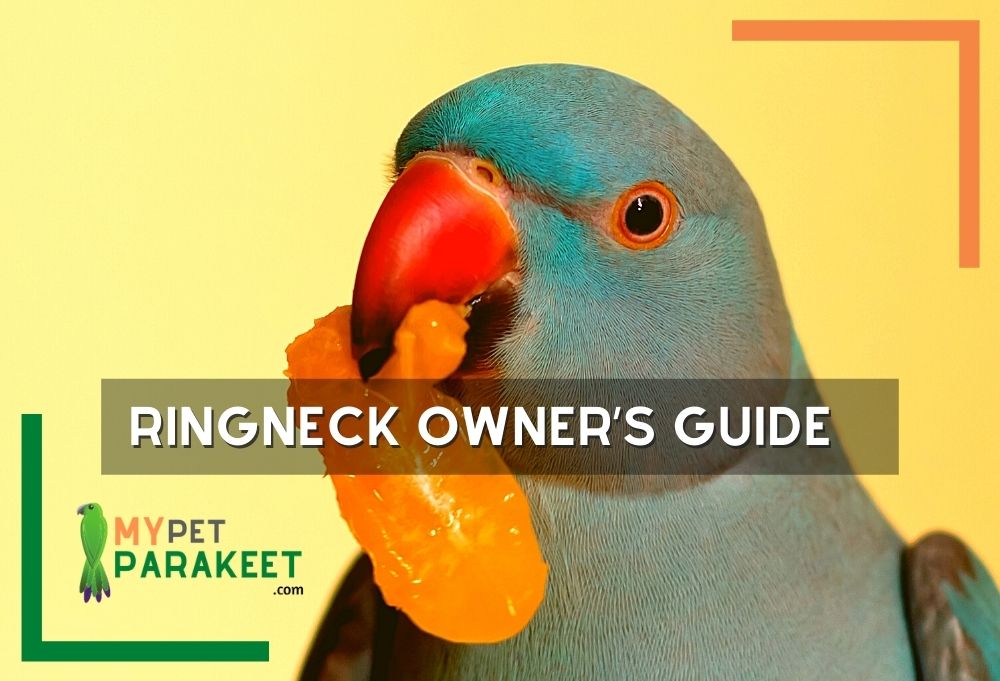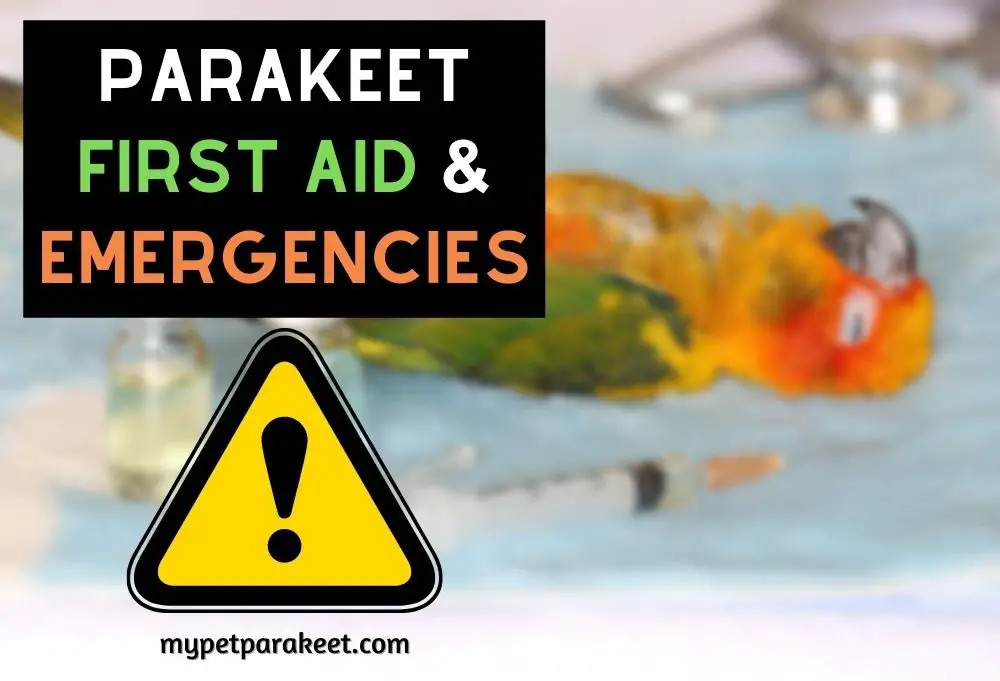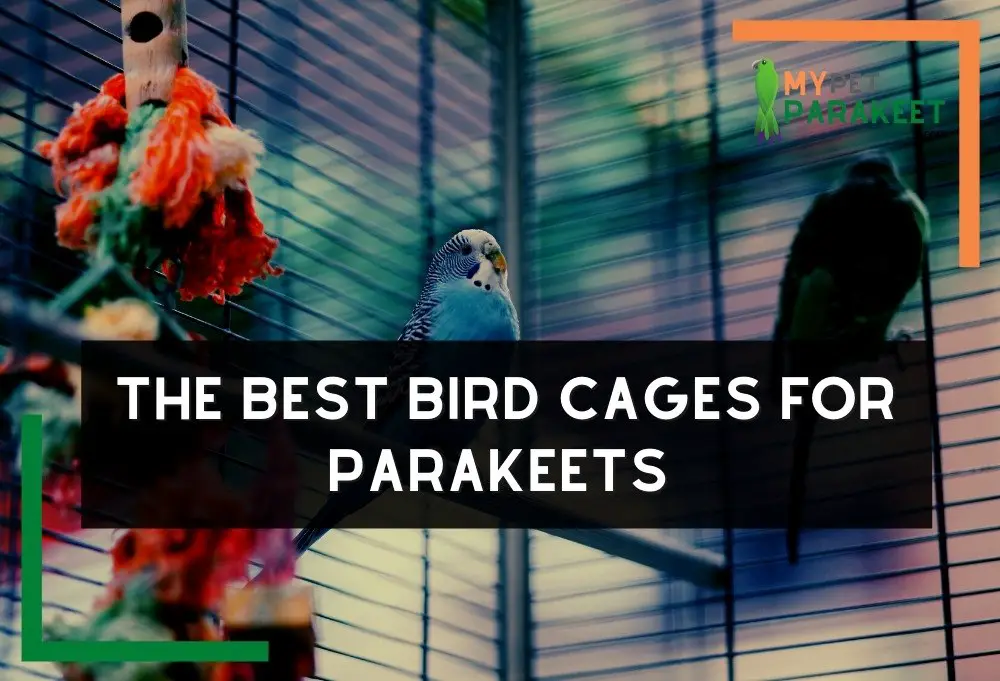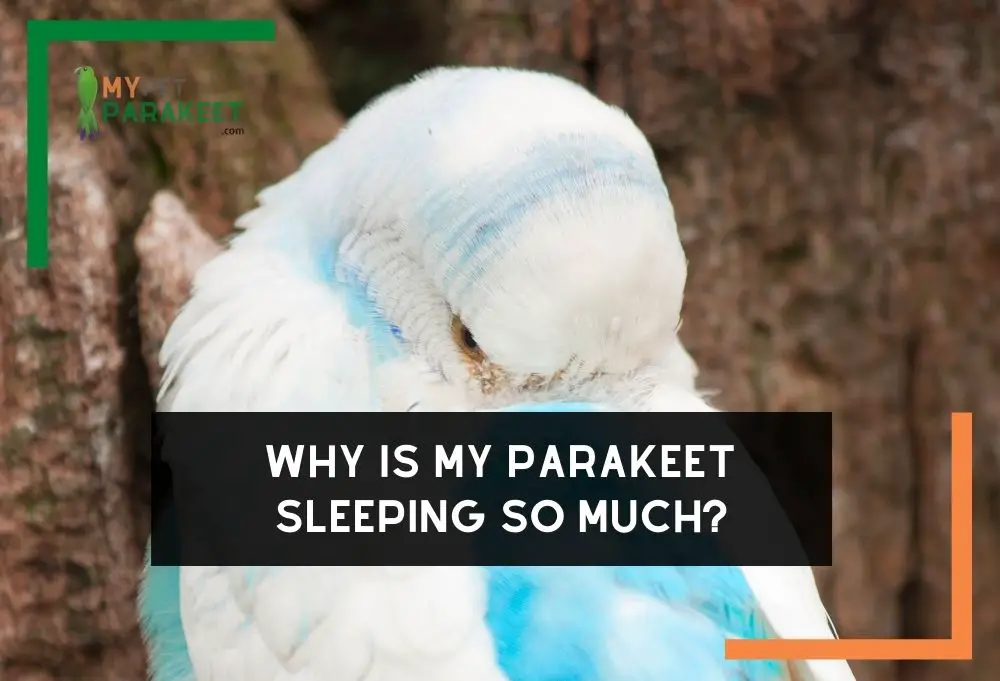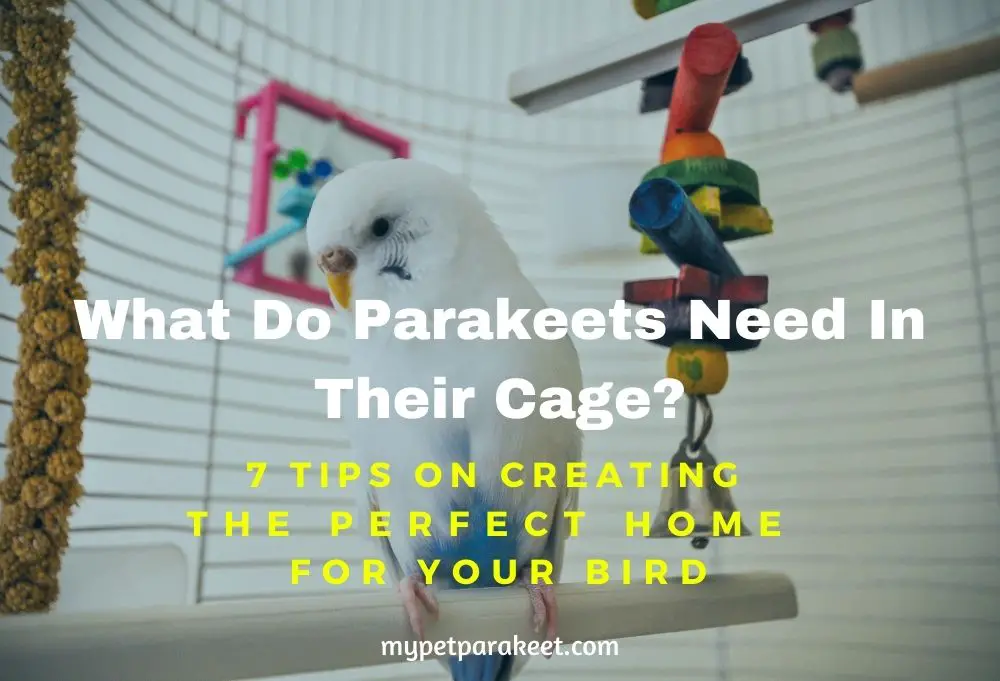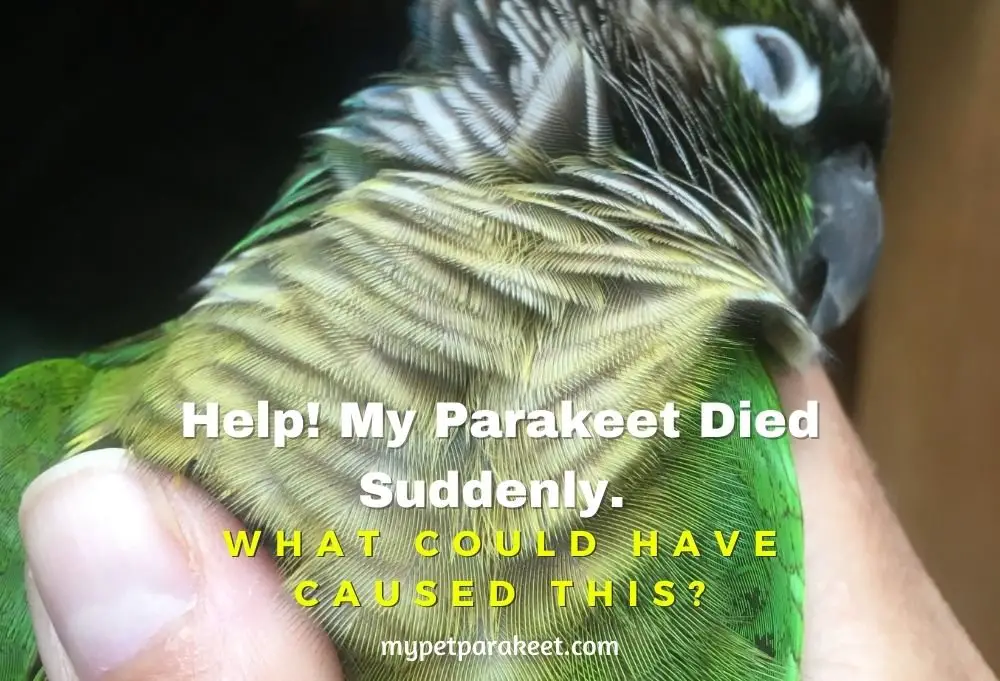Many people choose the Indian ringneck parakeet as a pet because of its magnificent coloring and social nature. These birds also enjoy learning new tricks and learning to say new words; which makes ownership very rewarding.
Because of its medium size and profound intelligence, the Indian ringneck parakeet can be a great addition to the family. They are great companion birds and will gladly talk all day. They are fun to play with, too.
However, this popular pet requires a lot of care and attention.
For this reason, they need a responsible caregiver who would spend the time required to learn about them and how to handle them properly.
If you are thinking of buying one of these birds and bringing it home as your pet, you need to learn a few of its interesting traits and how to care good care of them.
Choosing a Cage for Your Pet
If you are planning on keeping Indian Ringneck parakeets as pets, you should know that a healthy and happy pet requires a proper home! Your Indian Ringneck will need a large cage that is easy to clean and dismantle. Because this type of bird lives for many years, it is also important to consider durability.
When buying a cage for your pet, you need to consider its size, particularly your pet’s tail length. The minimum size of a cage for a single bird is about 36 inches high, 18 inches long, and 24 inches wide.
However, getting the biggest cage to fit your space and budget is always the best choice for your bird.
The Indian Ringneck enjoys playing in a spacious home. That is why the cage should be large enough to allow your pet to hop from perch to perch, make turns, and flap its wings without hitting the bars. Extra room for toys is also ideal.
The bars must also be at most an inch apart. This size is ideal in preventing the bird from getting stuck in between the bars. It can get injured if that happens.
Additionally, the material for the cage should be stainless steel. If you buy one made of coated metal, make sure that the pain is chip-resistant and non-toxic. Indian Ringnecks are prolific chewers and would easily strip the metal of its coating which could be very dangerous.
Indian Ringneck Diet
According to Beauty of Birds, most wild Indian Ringneck parakeets feed on grains, fruits, seeds, blossoms, berries, nuts, and vegetables. For protein, they eat insects and mealworm larvae. They’d forage on orchards and farmlands, which is why they are also considered pests in many places.
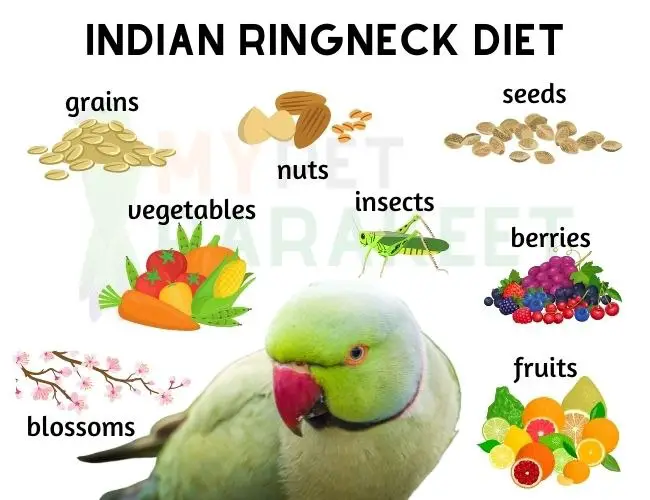
In captivity though, it is best to feed your pet with a variety of high-quality dry food. This should contain a good mix of seeds, nuts, and grains. An abundant supply of clean water for drinking, as well as bathing, is also needed.
The bird’s diet must also contain a suitable amount of vegetables and dark greens. Good examples that you can include in your pet’s diet are carrots, kale corn, celery, chard, and squash. Wild-picked greens like seeding grass, chickweed, sow-thistle, dandelion, and shepherd’s purse are great additions to their diet as well.
Fruits are also a great treat. These parakeets enjoy eating apples, pears, persimmons, grapes, pomegranates, bananas, and figs. Note that you shouldn’t feed your pet avocadoes as this can be toxic to them.
While some vets advise against feeding your pets human foods, there are a few that can be nutritious for them. Adding cooked chicken, whole grain rice, and beans to their diets is a great choice to introduce variety.
During the breeding season, the Indian Ringneck requires more nutrients. Sprouted seeds are a good source. However, make sure that the seeds are fresh and free from mold or bacteria. A way to check this is to smell the seeds. If the smell is sweet, it is good. If it smells sour or foul, discard them immediately.
Your pet will also require a good amount of calcium during this season. Serving it shell grit, crushed oyster shell, or cuttlefish is ideal. You can also add a calcium block inside its cage.
Remember to feed your pet in moderation. Overfeeding your parakeet can result in obesity.
Daily Handling and Socializing With Indian Ringnecks
Indian ringnecks can have varying temperaments. Some are very friendly, while others are a little more aloof. No matter your parakeet’s personality, one thing stays the same. It still requires a ton of socialization. If you and your family stay out all day, it is advisable not to get an Indian Ringneck for a pet.
Not many pet owners realize that their pet parrots require a significant amount of socialization. This is a huge factor that enables the bird to develop and reach its full potential. Pets who do not receive sufficient socialization become difficult or unfriendly. Some even become phobic from the isolation.
Abundant socialization is one reason why your pet’s cage should have a large enough door. You’d want to be able to easily take your pet out of its cage without causing it distress.
This type of bird is used to living in large groups in the wild. You have to serve as its flock, especially if do not plan on getting a second bird, and you plan on having just one for a pet. One way of doing this is to keep your pet’s cage in the busiest part of the home. If your family often congregates in the dining area, keep your bird there.
Socialization can occur during feeding sessions of young ringnecks. Caressing the bird gently while talking in a soothing voice will let the bird become acquainted with you. As the ringneck matures, holding sessions can be increased. Introducing new noises and objects should be done gradually.
You can allow your pet to roam freely if somebody is at home to look after it. Leaving the cage open will let the bird leave or retreat at will. You will notice that your pet will choose to interact with you from time to time. Use this opportunity to teach it tricks. Mental stimulation is great for its development.
Choosing the Best Toys for Your Indian Ringneck
Having toys in the cage is a great way to keep your Indian Ringneck entertained. There are many types of toys that you can buy for your pet. Get those that are highly stimulating or have several functions.
Foraging Toys

Foraging toys are great for giving your pet a feeding experience that is more natural to them. You can also get foraging toys that are containers where you can insert food. If you leave them in your pet’s cage, the bird will need to figure out how to get to the food inside.
Wooden Toys
Wooden toys are also a great option. Chewing on these toys is beneficial for the development of your pet.
The wood will keep the bird’s beak healthy and trim. For more destructive birds, having a metal or acrylic toy will give your pet something more durable to play with.
Tearing Paper
Tearing paper is highly enjoyable for Indian Ringnecks. They love the sound that the tearing creates. For this entertaining activity, you can leave cardboard or paper toys inside your cage.
Swing & Ladders
Adding swings or climbing toys inside the cage will give your pet tons of activities to do. Not only is this going to entertain your pet for a long time, but it will also provide opportunities for much-needed exercise. Look for swings with different textures for better foot exercise.
Noisey Toys
Lastly, don’t forget to include toys that produce sounds. Chimes and bells are a popular choice for many ringneck owners. However, note that loud sounds can scare your pet bird, particularly the young ones. Introducing sound-making toys should be done gradually.
Other things to remember
An annual checkup with an avian veterinarian is a must, even if your pet appears to be healthy. Some birds may seem all right but can already be suffering from a disease.
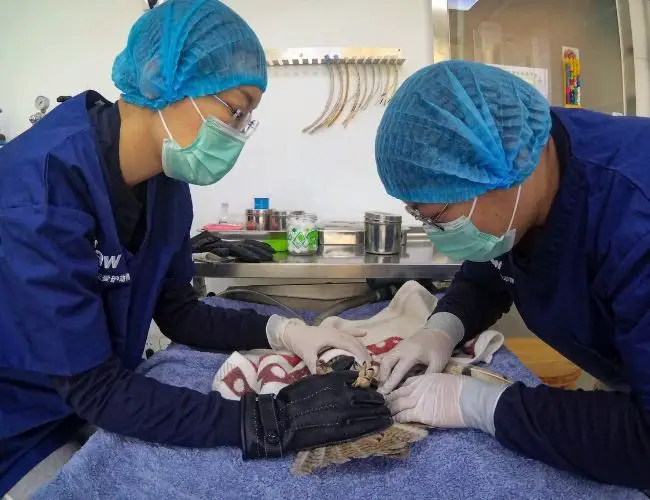
You want to stay ahead of illnesses. The vet can also assess if your pet is getting the right food and enough exercise.
Additionally, you need to keep your pet clean. Just like other birds, the Indian Ringneck produces dander and wing dust. To allow your bird to clean the dust off itself, leave a large yet shallow basin of water in its cage.
If your pet refuses to bathe on its own, you have to do it yourself. You can wash your bird in the sink or the shower. Bring your pet to the warmest part of the house to let it dry its feathers completely.
Nail trimming is also a huge part of keeping your pet well-groomed. You can bring your pet to a groomer if the need arises. You can also have this done at the vet’s clinic during its wellness checkup. However, installing a rough perch can reduce the need for trimming.
Conclusion
Anyone who decided to bring home an Indian ringneck parakeet as a pet is in for a treat. These playful birds are amazing companions and are beautiful to look at. However, you have to remember that they do require a lot of time and effort to keep healthy and happy.
Keep it in a big enough cage. Provide it with adequate and nutritious food and water. Keep it clean and entertained. But most of all, spend time with your bird and play with it as often as needed. Find what routine works best for you and your pet so that you can spend a lot of enjoyable moments together.

